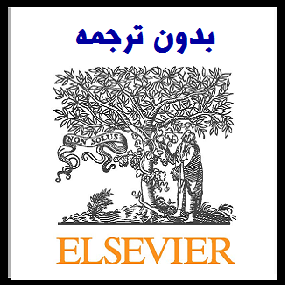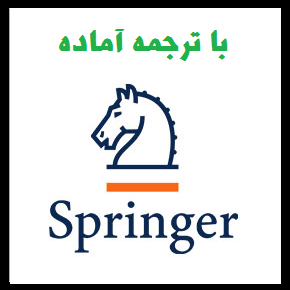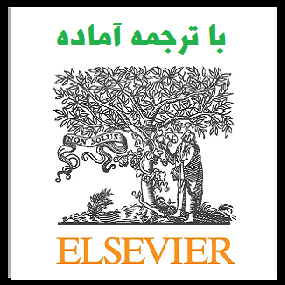مقاله انگلیسی حسابداری برای کمک های دولتی (2018 الزویر)


| عنوان فارسی مقاله | حسابداری برای کمک های دولتی: انتخاب استاندارد و حسابداری |
| عنوان انگلیسی مقاله | Accounting for government grants: Standard-setting and accounting choice |
| فهرست مطالب | Abstract Keywords JEL classification ۱ Introduction ۲ The technical problem and the responses of regulators ۳ Empirical research on IFRS options ۴ Outline of empirical analysis, and development of hypotheses ۵ Sample and data for empirical analyses ۶ Policy choice ۷ Disclosure quality ۸ The economic importance of asset grants ۹ Summary and conclusions Appendix A. Disclosure quality scoring Appendix B. Examples of ‘best practice’ disclosure References |
| نمونه مقاله انگلیسی | ABSTRACT
This paper provides evidence on several matters relating to accounting for government grants under International Financial Reporting Standards (IFRS). Focusing on grants related to assets, we trace the development of International Accounting Standard (IAS) 20, outline some of the problems of current accounting practice, and suggest why these have not been addressed by the standard-setter. Then, by hand-collecting data relating to 559 firms from 15 countries, we empirically analyze several issues. We show that asset grants are economically important for some firms and that the frequency of grants is significantly different across the countries. For the nonfinancial firms in our sample, we identify the grant-related accounting policy choice: a firm can either show the grant as deferred income or net it against the asset. The options are roughly equally popular overall but the firm’s country of domicile is strongly associated with the choice. Further, as a key element of disclosure quality for this topic, we investigate whether or not the balance sheet-related numbers relating to grants are disclosed, finding that many firms do not disclose them. Disclosure quality is better for firms which use the ‘deferred income’ option, and it is also better in countries where a higher proportion of firms has received government grants. International differences and poor disclosure are detrimental to international comparisons, so we conclude that the policy choice should be removed from the accounting standard. Introduction Accounting for government grants has become a neglected area of standard-setting and it is little researched. Several standards of the International Accounting Standards Board (IASB) deal with the issue (e.g. separately for listed firms and for unlisted firms), but they have quite different requirements, some involving choice by preparers. Further, the issue is important in the context of the political pressure on standard-setters to increase transparency about financial flows between firms and governments (e.g. OECD, 2015). However, there is no coverage of this area (which could be called ‘non-reciprocal transfers’) in the conceptual framework of the IASB (2010a) which is designed to guide standard-setting. Further, there are no proposals to undertake research or to amend the framework or standards in the area. Unusually for any accounting topic, there are no requirements in US generally accepted accounting principles (GAAP). Although the IASB has not resolved the issue, for reasons discussed in this paper, other influential parties have acknowledged its importance (EFRAG, 2016).1 This paper analyzes accounting for asset grants both conceptually and empirically. International Accounting Standard 20 (IAS 20, Accounting for Government Grants and Disclosure of Government Assistance) deals with how to account for various types of government assistance. The general principle is old-fashioned matching: a grant should be recognized as income when the costs (which the grant is intended to compensate) are recognized as expenses (para. 12). Thus, a grant intended to compensate running costs is recognized as income in line with the costs. Similarly, a grant related to the purchase of an asset is taken to income over the life of the asset. This means that there will be a credit balance equal to the excess of cash received or receivable over the amount so far treated as income. IAS 20 allows two options for the presentation of this credit on the balance sheet: show it as deferred income (a sort of liability) or net it against the asset (para. 24). Consequently, the choice affects leverage, because the ‘deferred income’ option results in larger liabilities.2 In the income statement, a government grant increases profit over several years by the same amounts under both options, either by increasing ‘other operating income’ or by reducing the depreciation expense. Our empirical analysis of 559 firms from 15 countries shows that, in 2013, 43% of non-financial firms have asset grants, peaking at 89% of firms in Germany. These grants are economically important for some firms. For example, the Spanish firm, Enagas, reported government grants for the purchase of infrastructure assets3 with a carrying amount of €۲۵۳ million, which represented 11.9% of its shareholders’ equity.4 Further, if Enagas had financed the respective assets internally instead of receiving grants, its profit would have been 3.4% lower because of higher depreciation.5 The importance of grants also varies internationally. At its peak, in Italy, grants amount on average to over 14% of equity for firms with grants. |
| نمونه ترجمه کامپیوتری | چکیده
این مقاله شواهدی در مورد موضوعات مختلف مربوط به حسابداری برای کمک های دولتی تحت استانداردهای بین المللی گزارشگری مالی (IFRS) ارائه می دهد. تمرکز بر کمک های مالی مربوط به دارایی ها، ما توسعه استاندارد بین المللی حسابداری (IAS) 20 را ردیابی می کنیم، برخی از مشکلات موجود در عمل حسابداری فعلی را بیان می کنیم و پیشنهاد می کنیم که این روش توسط استاندارد تنظیم نشده است. سپس، با جمع آوری داده های دستی مربوط به 559 شرکت از 15 کشور، ما تجربی چندین مسئله را تحلیل می کنیم. ما نشان می دهیم که کمک های دارایی ها برای برخی از شرکت ها از لحاظ اقتصادی مهم هستند و فراوانی کمک های مالی در کشورهای مختلف متفاوت است. برای شرکت های غیر مالی در نمونه ما، انتخاب سیاست های حسابداری مرتبط با کمک های مالی را شناسایی می کنیم: یک شرکت می تواند کمک مالی را به عنوان درآمد ناخالص یا خالص آن بر علیه دارایی نشان دهد. گزینه های تقریبا به طور مساوی به طور کلی محبوب هستند، اما کشور محل سکونت خود را به شدت با انتخاب انتخاب شده است. علاوه بر این، به عنوان یک عنصر کلیدی از کیفیت افشاء در این موضوع، بررسی می کنیم که آیا شماره های مربوط به ترازنامه مربوط به کمک های مالی افشا شده است یا خیر، مشخص شد که بسیاری از شرکت ها آنها را افشا نمی کنند. کیفیت افشای بهتر برای شرکتهایی است که از گزینه «درآمد بازنشستگی» استفاده می کنند و همچنین در کشورهایی که بخش بالاتر از شرکت ها کمک های دولتی دریافت کرده است بهتر است. تفاوت های بین المللی و افشای ضعیف به مقایسه بین المللی آسیب می رساند، بنابراین ما نتیجه می گیریم که انتخاب سیاست باید از استاندارد حسابداری حذف شود. توجه؛ (این ترجمه توسط نرم افزار انجام شده و ویرایش نشده است و احتمال وجود اشتباه در آن وجود دارد. در صورت ثبت سفارش، ترجمه توسط مترجمین مجرب انجام خواهد شد. برای مشاهده نمونه ترجمه های تخصصی و اخیر مترجمین جهت اطمینان از کیفیت ترجمه، اینجا کلیک نمایید.) |
| سال انتشار | 2018 |
| ناشر | الزویر |
| مجله | مجله حسابداری و سیاست عمومی – Journal of Accounting and Public Policy |
| کلمات کلیدی | کمک های دولتی، IAS 20، انتخاب حسابداری، تفاوت های بین المللی |
| کلمات کلیدی انگلیسی |
Government grants, IAS 20, Accounting choice, International differences |
| صفحات مقاله انگلیسی | 17 |
| مناسب برای رشته | حسابداری |
| مناسب برای گرایش | حسابداری دولتی |
| توضحیات | این مقاله انگلیسی جدید بوده و تا کنون ترجمه نشده است. جهت ثبت سفارش ترجمه از لینکهای زیر استفاده نمایید. |
| دانلود مقاله انگلیسی | ○ دانلود رایگان مقاله انگلیسی با فرمت pdf (کلیک کنید) |
| سفارش ترجمه فارسی | ○ سفارش انجام ترجمه و تایپ این مقاله (کلیک کنید) |
| سایر مقالات این رشته | ○ مشاهده سایر مقالات رشته حسابداری (کلیک کنید) |



